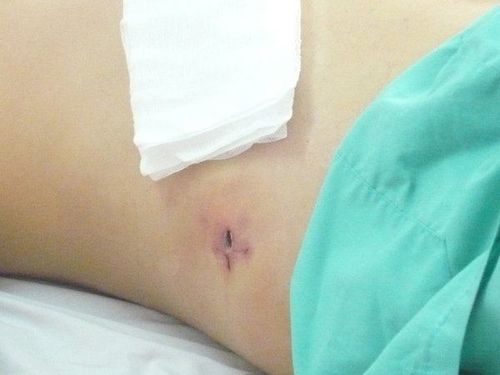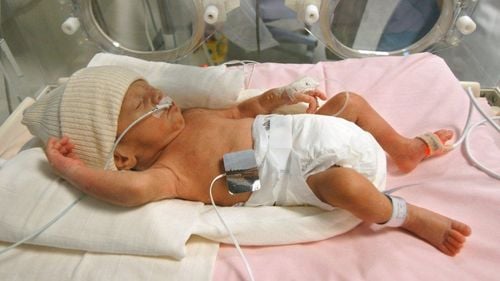This is an automatically translated article.
The article was professionally consulted by MSc Vu Van Quan - Department of General Surgery & Anesthesia - Vinmec Hai Phong International General Hospital.Intestinal obstruction and paralytic ileus are two possible complications after surgery. In order to distinguish and accurately diagnose mechanical intestinal obstruction or functional bowel paralysis after surgery, clinical examination and correct abdominal X-ray alone are not enough, it is necessary to use the method of computed tomography (CT).
1. What is intestinal obstruction and paralytic ileus after surgery?
Intestinal obstruction is a condition of obstruction of substances in the intestinal lumen, which can partially or completely block the intestines, hindering the movement of gas, liquid, and solids inside the intestine. Intestinal obstruction needs to be treated early otherwise it will cause pain, vomiting, and more dangerous infection, intestinal necrosis, life-threatening.
Paralytic ileus is a condition in which gas and fluid accumulate in the intestinal lumen because the abdominal wall is inhibited after surgery. Most cases of postoperative paralytic ileus resolve spontaneously within 2 to 3 days.
2. Differentiate between intestinal obstruction and paralytic ileus based on clinical examination
2.1. Postoperative intestinal obstruction 2.1.1 Symptoms Signs of intestinal obstruction after surgery are the same as intestinal obstruction due to other causes. The patient will have symptoms such as:
Abdominal cramping Abdominal pain Stomach bloating

Nausea, vomiting, regurgitation of stool-like substances. Patients will be clinically examined and tested for accurate diagnosis, including: X-ray, CT scan, abdominal ultrasound, laparoscopy, ...
2.1.2 Treatment methods Treatment Methods to treat intestinal obstruction after surgery include:
Medical treatment: Fasting, intravenous nutrition, gastric tube, antibiotics, pain relief, ... Abdominal surgery: Applied in case of obstruction bowel completely, medical treatment failed. 2.2 Postoperative intestinal paralysis Signs of postoperative bowel paralysis include:
Mild abdominal pain Bloating, abdominal distention Nausea Constipation Soft, distended or distended abdomen Decrease or loss of bowel motility If posterior paralytic ileus is suspected After surgery, the patient will be clinically examined and assigned to perform diagnostic imaging tests such as X-ray, CT Scan, ultrasound, and blood tests to assess the infection status. , metabolic disorders to check the extent of intestinal damage.
Paralytic ileus may resolve on its own after about 2-3 days.
2.3. Distinguishing intestinal obstruction and paralytic ileus after surgery Postoperative intestinal obstruction
Occurrence: regardless of time after surgery. Pain condition: Cramping pain Visible abdominal distension

Intestinal peristalsis usually increases Small bowel dilatation Usually does not dilate the colon Post-operative ileus
Appears soon after surgery Pain condition: not prominent Abdominal distention: not obvious Field motility is usually absent Have dilated small intestine Have dilated colon
3. Role of CT scan in differentiating intestinal obstruction and paralytic ileus after surgery
CT has high sensitivity and specificity in the differential diagnosis of postoperative paralytic ileus and mechanical small bowel obstruction Combined with clinical examination, conventional radiography gives inaccurate results, high accuracy and low accuracy. The sensitivity is only about 19%, the diagnostic price is poor. CT scan helps to effectively differentiate between mechanical semi-obstruction of small bowel and functional paralytic ileus. Contrast scan of small intestine in 4 cases of small bowel semi-obstruction due to mechanical causes study can be of great help in assessing the degree of congestion. Master. Doctor. Vu Van Quan has more than 10 years of experience working in the field of General Gastroenterology, specializing in examining and treating surgical pathologies of the gastrointestinal tract, liver, bile, pancreas and diseases of the abdominal peritoneum and abdominal wall. .
Please dial HOTLINE for more information or register for an appointment HERE. Download MyVinmec app to make appointments faster and to manage your bookings easily.













